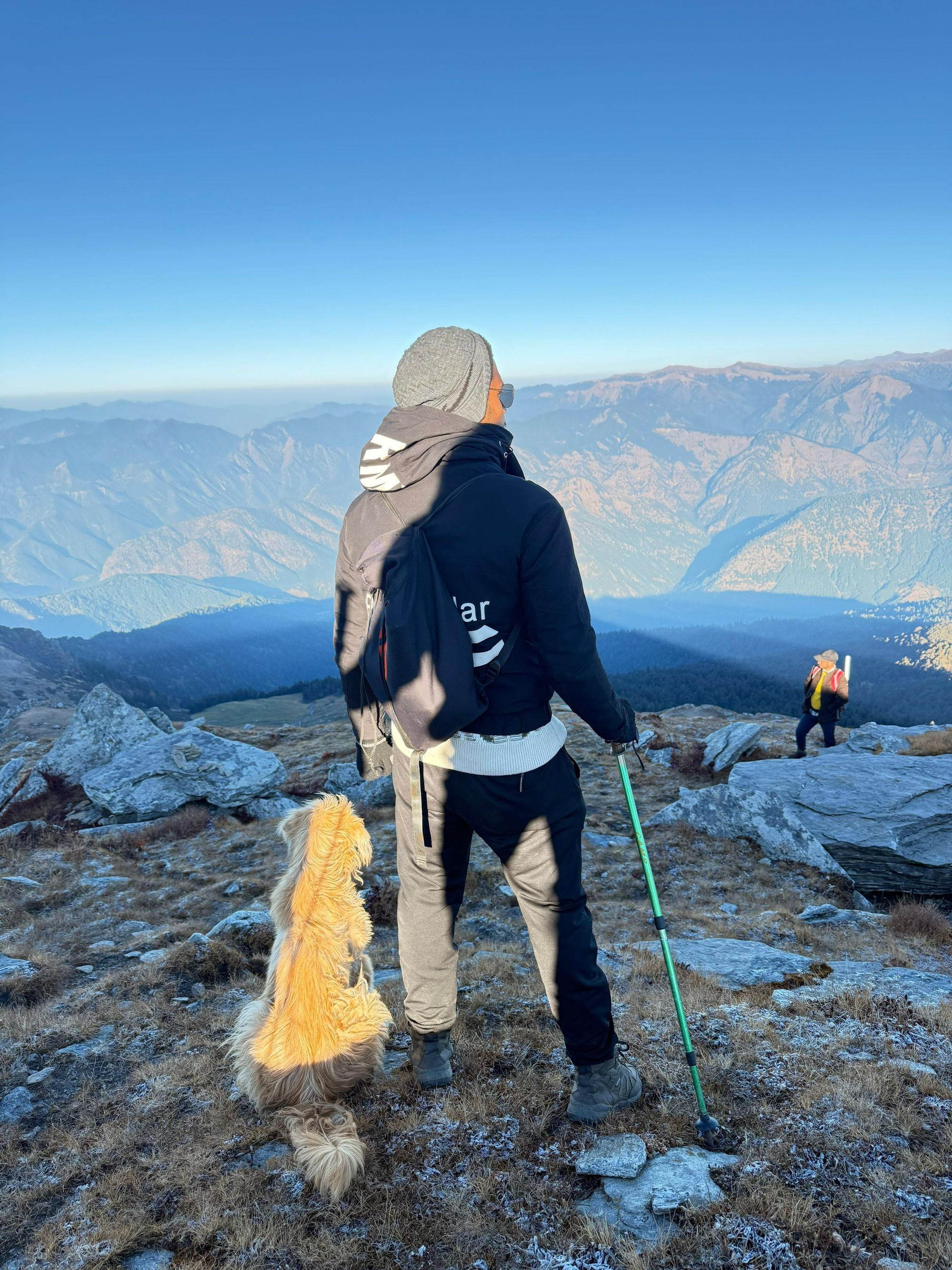Where Silence Speaks and Mountains Heal: Aditya’s Journey to Kedarkantha with Thrillophilia

"Sometimes, the mountains don’t call—you just find yourself wandering toward them."
Life had become a blur of deadlines, mundane routines, and questions I couldn’t quite answer. My days felt like chapters in a book I hadn’t chosen to read. So, when I stumbled upon a post about the Kedarkantha trek, I knew this wasn’t just a trip; it was my escape, my rebellion against the predictable, my search for something raw and unfiltered.
With no company but my restless soul, I booked the trek through Thrillophilia, packed my bags, and left without telling too many people. Sometimes, you don’t need a reason; you need a leap of faith.
The journey began on a cold winter morning in Dehradun. A solo traveller among a group of strangers, I carried a mix of excitement and apprehension. Would this be the adventure I craved or just another story I’d tell myself?

As the car pulled out of the city, the questions faded, replaced by the beauty of the journey ahead. The road to Sankri was a winding lullaby, each turn revealing secrets hidden in the folds of the mountains. I felt the world fall away, replaced by pine forests that whispered ancient tales, villages that seemed to belong to another era and a river that flowed as though it had never known stillness.
By the time we reached Sankri, dusk had painted the sky in hues of orange and purple. The tiny village, tucked away like a secret in the Himalayas, greeted us with the scent of wood smoke and the quiet chatter of locals.
Sankri felt like a gateway to a world where time slowed down and life felt richer. That night, as I lay in the cosy guesthouse, the mountains seemed to hum a gentle tune outside my window. I was no longer a stranger here.
Chapter 1
The next morning, my trek officially began. Sankri to Juda Ka Talab was a climb not just in altitude but in perspective. The path wove through dense forests, where sunlight danced on leaves and birds sang songs I didn’t understand but felt deeply.

Every step felt like peeling away a layer of myself, leaving behind the noise and clutter of the world I’d left. I crossed swaying suspension bridges that made my heart skip a beat and paused at quaint villages where children greeted us with shy smiles.
Juda Ka Talab, when it finally revealed itself, looked like it had been pulled straight from the pages of a myth. The lake shimmered in the soft light, its surface a mirror reflecting pine trees that stood like sentinels.
Legend has it that Lord Shiva meditated here, and standing by its edge, I understood why. The stillness was profound, a silence that seemed to hold answers to questions I hadn’t yet asked. That night, nestled in a tent just a few hundred meters from the lake, I felt closer to the stars than ever before.
Chapter 2
The journey from Juda Ka Talab to the base camp was like walking through nature’s own art gallery. The trail was draped in snow, each step crunching softly beneath my boots. Towering Himalayan peaks—Bandarpoonch, Swargarohini, and Kala Nag—rose like guardians, their snow-covered crowns glinting in the sunlight. It was impossible not to feel small yet significant, like a tiny brushstroke in this grand masterpiece.

At the base camp, the camaraderie among trekkers began to grow. We swapped stories over steaming cups of chai, shared layers to fight the biting cold, and laughed at the absurdity of trying to charge our phones with portable batteries that froze halfway.
It was here I learned from our guide about the traditions of the mountain people, their reverence for the peaks, and their deep connection to the land. It wasn’t just a trek anymore; it was a journey into the heart of the Himalayas and its people.
Chapter 3
The summit day began in the hush of the night, our headlamps slicing through the inky darkness. Each step felt like a conversation with the mountain, a silent negotiation to let us reach its crown. As we climbed, the first rays of dawn kissed the horizon, turning the snow golden and casting long shadows that danced with our silhouettes. The air was thin, but my heart was full.

Reaching the Kedarkantha summit felt like standing at the edge of the world. The view was a panoramic spectacle—the sun rising over the Yamunotri and Gangotri ranges, their peaks bathed in hues of pink and orange. The Kinner Kailash range stood proud in the distance, its icy slopes shimmering. It was a moment that defied words, a moment that felt like a thousand emotions compressed into a single breath.
As we descended back to Juda Ka Talab, the euphoria of the summit lingered, each step feeling lighter than the last. That night, back in the tent, I replayed the day’s climb in my mind, grateful for every ache and shiver that had brought me to this point.
Epilogue
The final descent back to Sankri was bittersweet. The trail that had been my teacher, my confidant, and my stage for five days was now behind me. But the memories, the friendships, and the quiet strength I had found within myself would stay forever.

As our vehicle wound its way back to Dehradun, I looked back at the mountains one last time. The Kedarkantha trek wasn’t just a journey through snow and forests; it was a journey into myself. Thrillophilia had orchestrated it all with seamless precision, but it was the mountains that truly stole the show.
To anyone contemplating this trek, I have only one thing to say: the mountains don’t just call—they heal. Go, and let them.
Read more: Thrillophilia Uttarakhand Trek Reviews